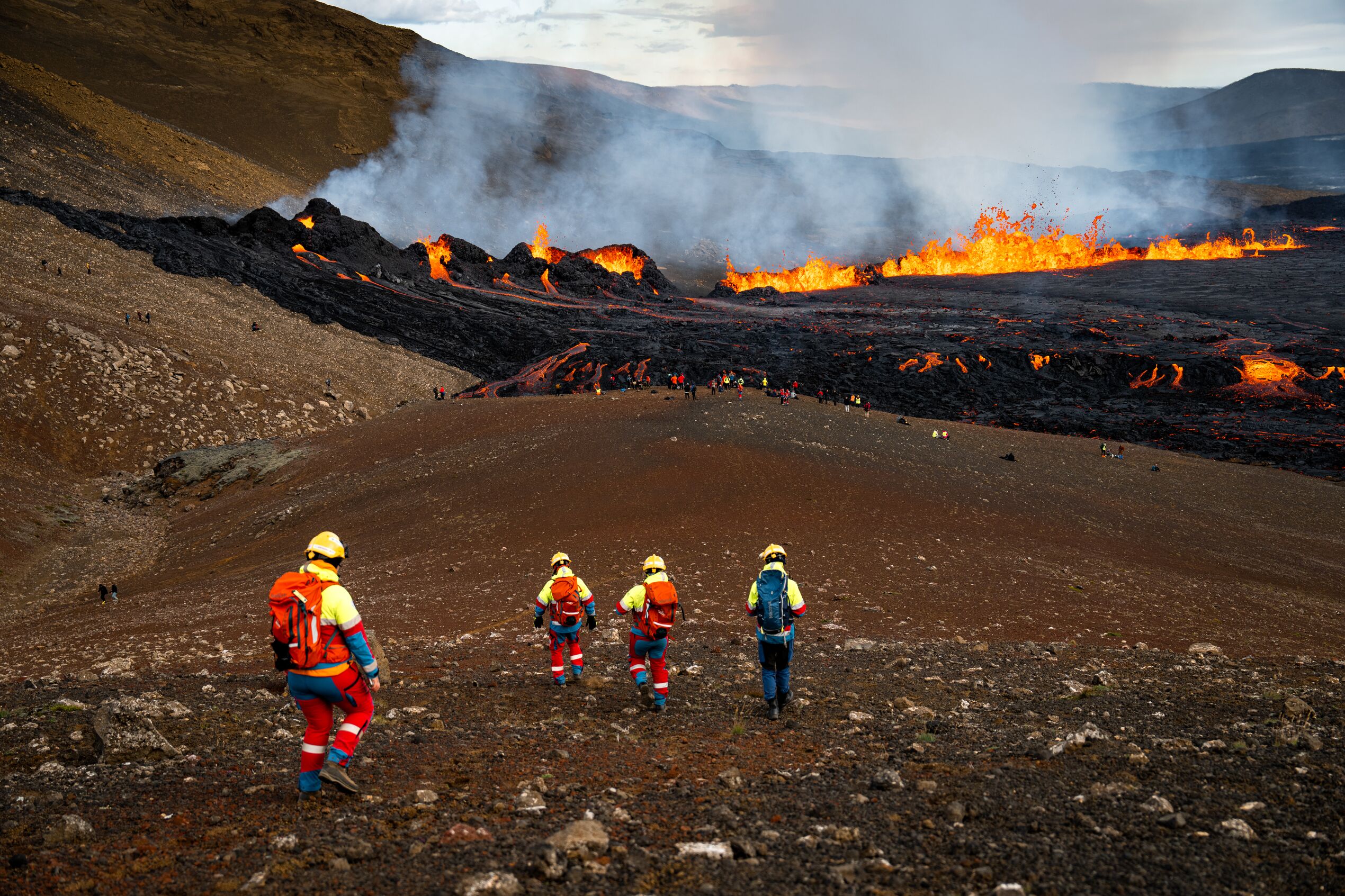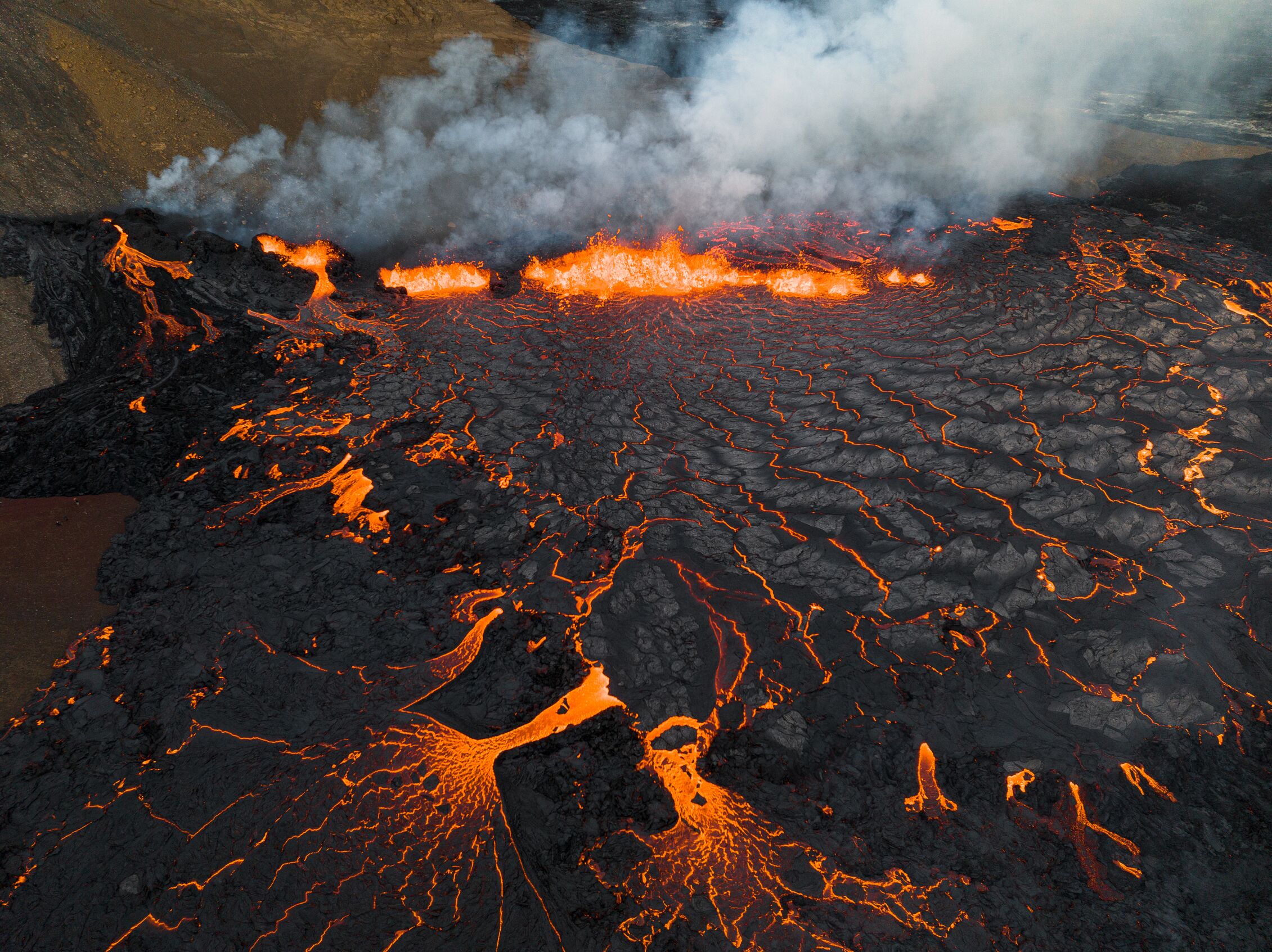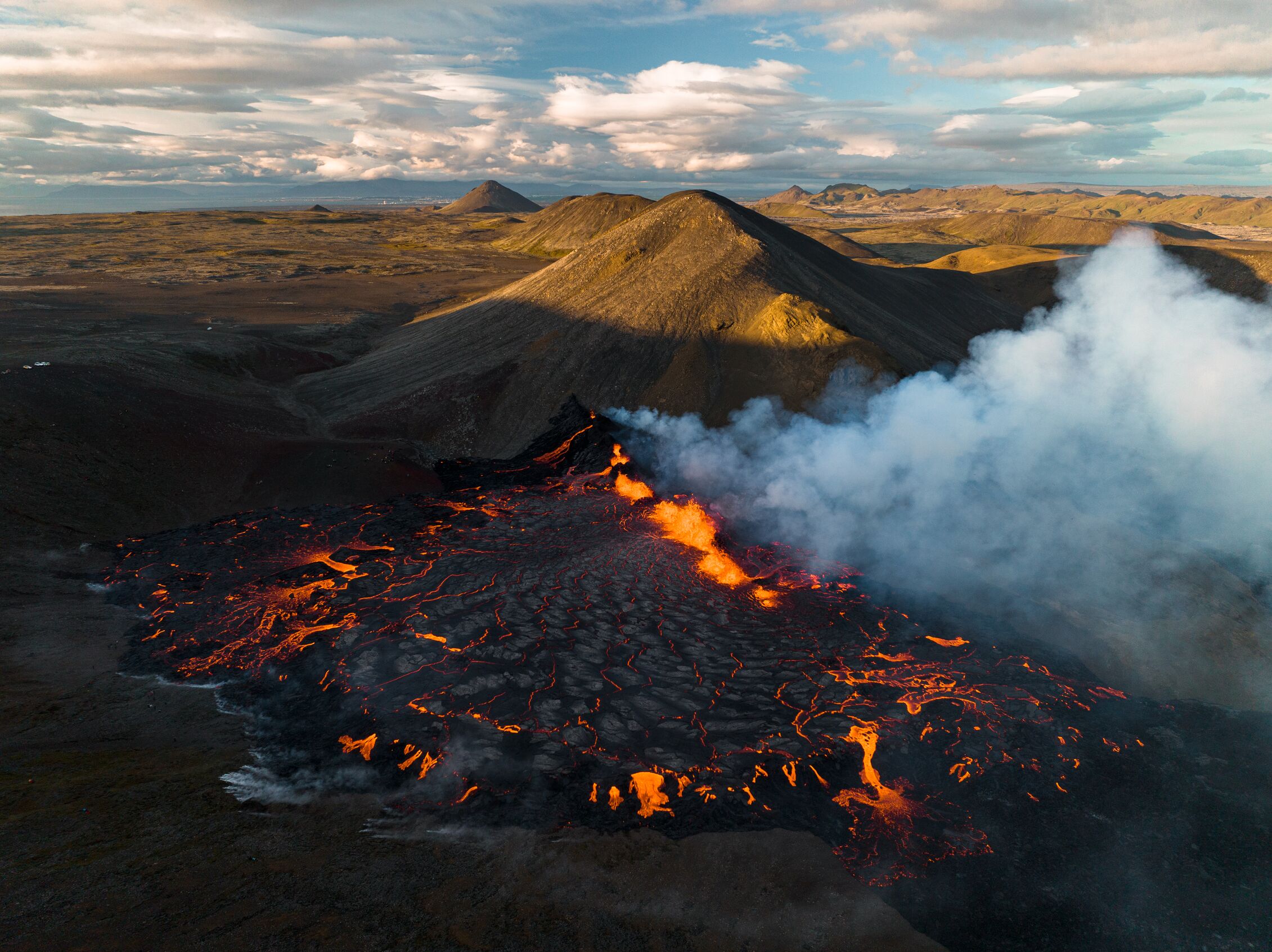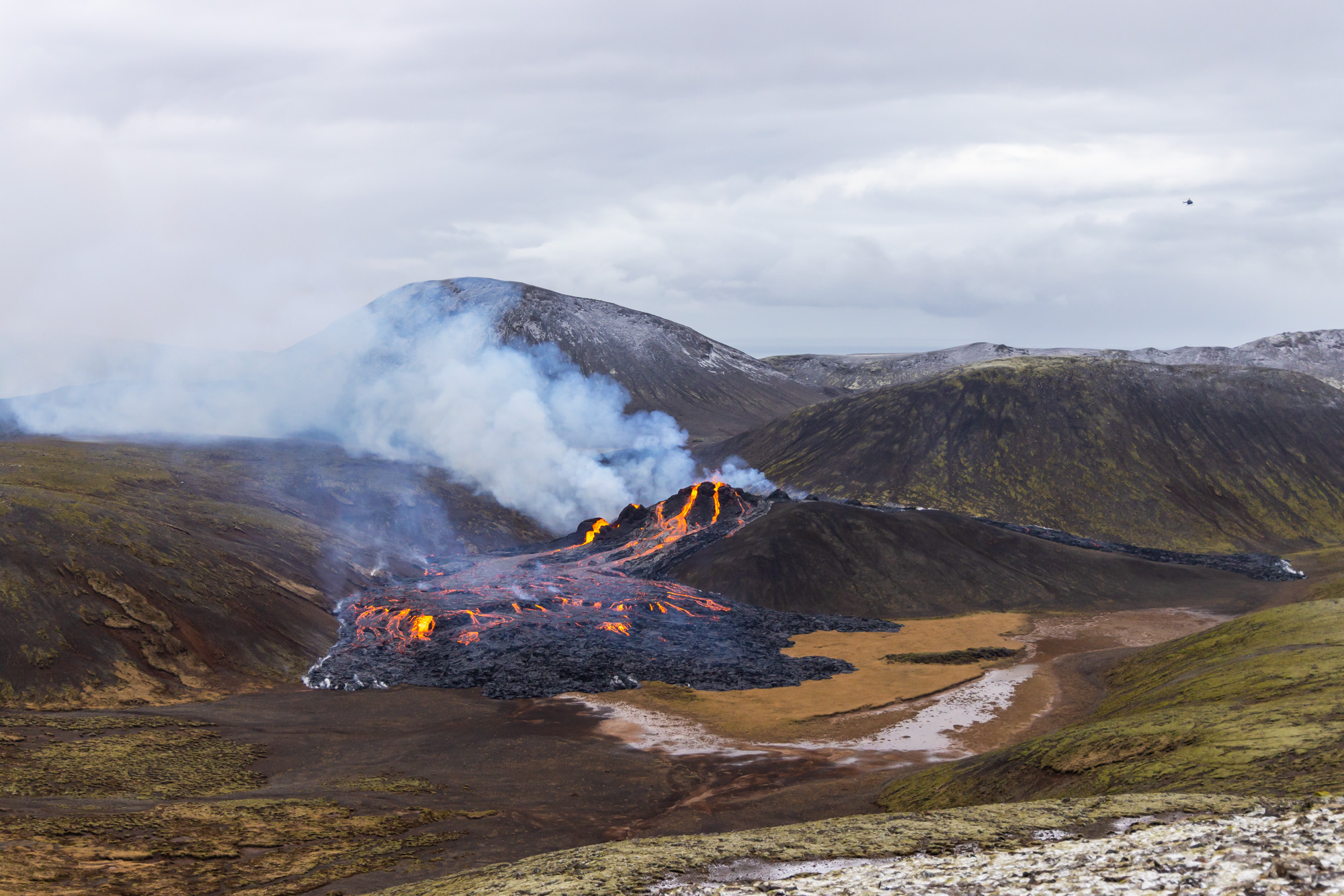Flights not affected by volcanic activity
Last updated: April 3, 2025
The Icelandic Meteorological Office has announced that the most recent volcanic activity near Grindavík in Southwest Iceland has stopped.
The activity began on April 1 and was over within 24 hours. It was the eighth eruption since December 2023 occuring in the Sundhnúksgígar crater row area.
The activity did not disrupt air travel to and from Iceland. None of the recent eruptions have affected flight schedules or operations at Keflavík airport.
Life in the rest of Iceland continues as normal. It's safe for travelers to visit and explore our pristine nature, geothermal lagoons, and the soon-to-return midnight sun.
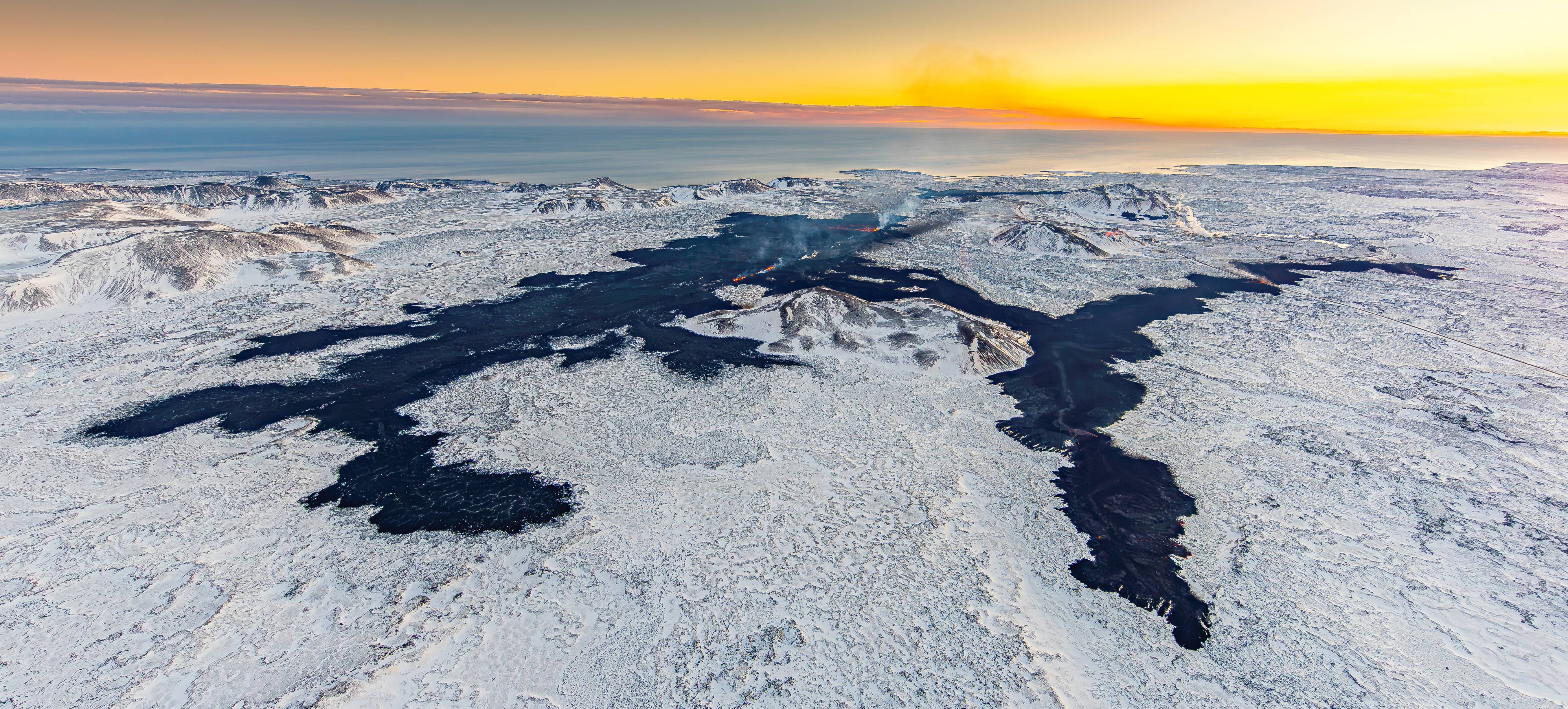
About the recent volcanic activity
The experts from the Icelandic Meteorological Office have put together a great short video to explain in simple terms what's happening on the Reykjanes peninsula, and why it's safe to travel to Iceland.
Location of the activity
The most recent volcanic eruption was the eighth since December 2023 (the 11th on the peninsula since 2021). All events have been localized to the Grindavík area. The most recent activity was localized to a similar area as in 2024 eruptions, close to the Sundhnúksgígar crater row, and not far north of the evacuated town of Grindavík.
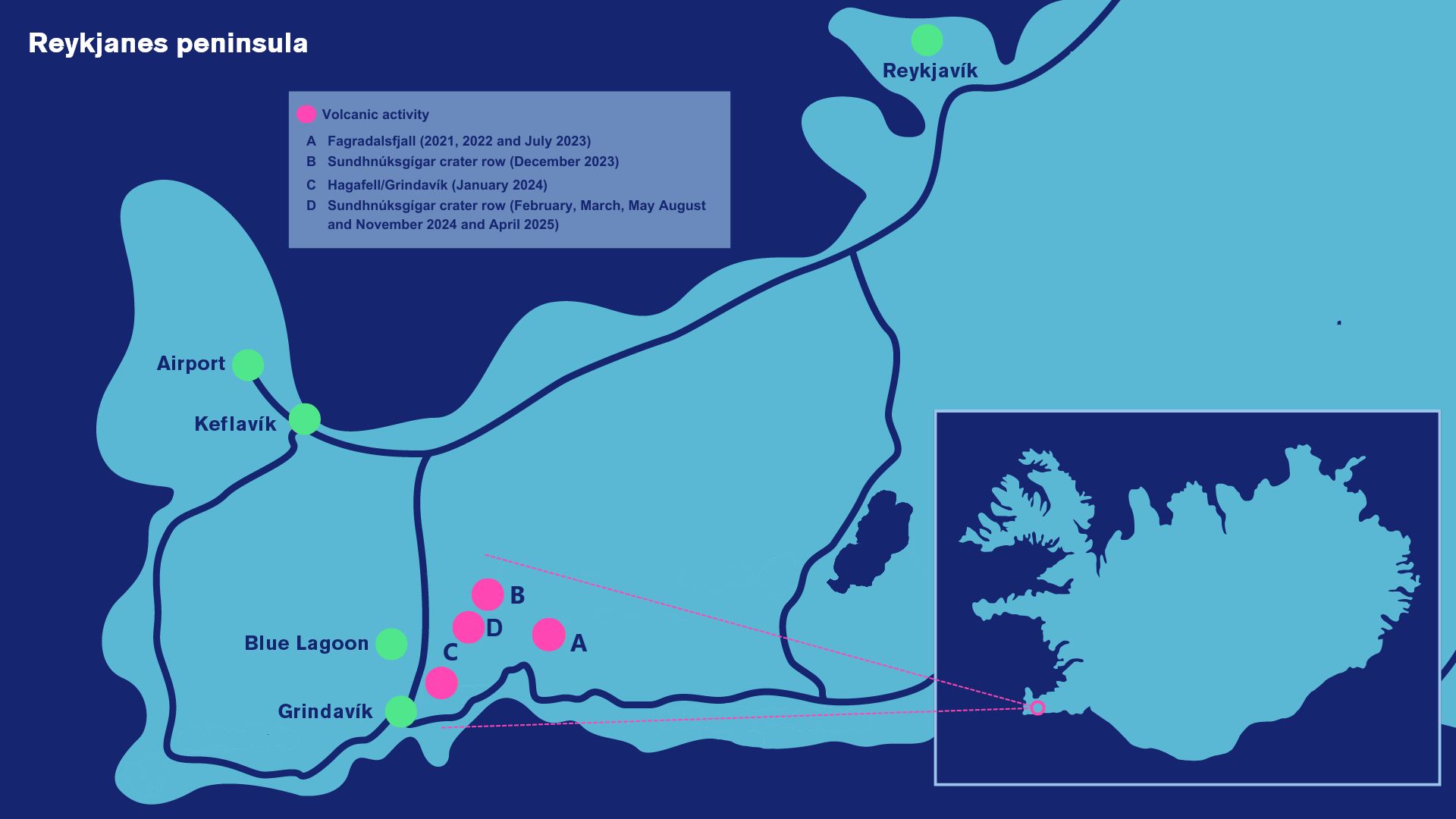
Our preparedness
Iceland is a volcanic island, with many active volcano systems. Eruptions and earthquakes are a part of our DNA, and we Icelanders are always well prepared for volcanic events.
The country’s incredible nature has given us excellent training and expertise to deal with unique situations – you can learn about Iceland's volcanic history in our guide to volcanoes in Iceland.
In fact, we’ve now experienced 11 eruptions on the Reykjanes peninsula over the last four years:
- The first three, at Fagradalsfjall in 2021, 2022 and July 2023, were so-called ‘tourist eruptions’ that thousands of locals and tourists witnessed and enjoyed.
- The fourth eruption was at the Sundhnúksgígar crater row on December 18, 2023, and lava flow stopped within 72 hours.
- The fifth eruption was close to the town of Grindavík, beginning on January 14, 2024. The seismic activity in the area, coupled with the January eruption, has had a devastating effect on this small community.
- The sixth eruption began on February 8, 2024, close to the site of the fourth eruption. The lava flow stopped within 48 hours.
- The seventh eruption began on March 16, 2024, in the same area as the eruption in February and December. It lasted longer than its predecessors and ended on May 9.
- The eighth eruption began on May 29, 2024, in the Sundhnúksgígar crater row and was declared over on June 22 after 24 days.
- The ninth eruption began on August 22, 2024, again in the Sundhnúksgígar area, and ended on September 5 after 14 days.
- The tenth eruption began at 11:14pm on November 20, 2024, in the Sundhnúksgígar area and ended on December 8.
- The 11th eruption began at 9:44am on April 1, 2025, and was over within 24 hours.
None of the recent eruptions have affected flight schedules or operations at Keflavík airport.
Did you know that there are currently over 40 volcanoes erupting around the globe without significantly disrupting air traffic?
Visiting volcanic areas
The site of the Fagradalsfjall eruptions (in 2021, 2022 and July 2023) is once again open to visitors. Note: Hiking in the area of the most recent eruptions is strictly forbidden.
You can see detailed information about hiking trails around Fagradalsfjall, as well as accessible viewpoints for more recent eruptions, on the Visit Reykjanes website.
Banner photo: View of the lava fields surrounding the Fagradalsfjall volcano.
Read more
For more information on the situation, we recommend the following sites:
Safetravel – general information on safety in the area
Icelandic Road Authority – road closures in the Southwest
Icelandic Meteorological Office – detailed updates from experts
Visit Reykjanes – news for the region
RÚV – live blog in English from the national broadcaster
mbl.is – links to livestreams from the Grindavík area
Government of Iceland – official information from the Icelandic government
Air quality – check the air quality across the country
The Department of Civil Protection and Emergency Management – known in Icelandic as 'Almannavarnir'
